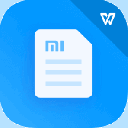








Best Arduino Projects

توضیحات Best Arduino Projects
Arduino is an open-source prototyping platform based on easy-to-use hardware and software. Arduino boards are able to read inputs - light on a sensor, a finger on a button, or a Twitter message - and turn it into an output - activating a motor, turning on an LED, publishing something online. You can tell your board what to do by sending a set of instructions to the microcontroller on the board. To do so you use the Arduino programming language (based on Wiring), and the Arduino Software (IDE), based on Processing.
That actually says it all.
You can find the complete introduction here.
Maybe a little more information about the board:
The Arduino Board itself is a blue circuit board, the size of a credit card (but they also have models in other sizes). It has two rows of connectors (the 'headers'), a power connector and a USB connector. The brain of the board is an Atmel microcontroller. It's like a really small, very low power 'computer'. (It only has 32KB of storage, 2KB of RAM, and the 8-bit processor runs at only 16MHz.) For most applications, however, this is more than enough. The pins of the processor connect to the headers, and you can connect them to virtually anything you can imagine. You just need to write some lines of code to control them. The I/O pins (Input/Output) can be used as input pins, to connect buttons or knobs, temperature sensors, light sensors, or even keyboards and mouses, digital musical instruments … or they can be used as output pins, to connect LEDs, drive motors, control the lights in your home, connect to small displays or even connect to the Internet, so that it can check your mail, post tweets ... Through the USB connection you can also use it to control your computer, or use your computer to control the Arduino.
As you can see, the sky's pretty much the limit !
Arduino is a popular open-source development board for engineers and makers to develop electronics projects in an easy way. It consists of both a physical programmable development board (based on AVR series of microcontrollers) and a piece of software or IDE which runs on your computer and used to write and upload the code to the microcontroller board.
Explore below some interesting arduino projects and tutorials based on different types of arduino baords like Arduino Uno, Arduino Pro Mini, etc. These DIY arduino projects for beginners are explained well and you can find the complete guide to DIY these projects with the help of circuit diagrams, source codes and videos. You can also browse below pages to get new arduino project ideas.
آردوینو یک پلت فرم نمونه سازی منبع باز بر اساس آسان برای استفاده و سخت افزار و نرم افزار است. بردهای آردوینو قادر به خواندن ورودی - نور بر روی یک حسگر، یک انگشت بر روی یک دکمه، و یا یک پیام توییتر - و تبدیل آن به یک خروجی - فعال کردن یک موتور، روشن کردن یک LED، انتشار آنلاین چیزی. شما می توانید هیئت مدیره خود را بگویید که چه به با ارسال مجموعه ای از دستورالعمل ها را به میکروکنترلر در هیئت مدیره است. برای این کار شما به زبان برنامه نویسی آردوینو (بر اساس سیم کشی)، و نرم افزار آردوینو (IDE)، بر اساس پردازش استفاده کنید.
که در واقع می گوید.
شما می توانید معرفی کامل اینجا پیدا کنید.
اطلاعات بیشتر شاید کمی در مورد هیئت مدیره:
آردوینو هیئت مدیره خود را به یک تخته مدار آبی، به اندازه یک کارت اعتباری است (اما آنها نیز مدل های در اندازه های دیگر) است. این دو ردیف از اتصالات (از 'هدر)، اتصال برق و یک کانکتور USB. مغز از هیئت مدیره یک میکروکنترلر Atmel است. آن را مانند یک واقعا کوچک، قدرت بسیار کم 'کامپیوتر' است. (این تنها 32KB از ذخیره سازی، 2KB حافظه رم و پردازنده 8 بیتی اجرا می شود در تنها 16MHz.) برای اکثر برنامه های کاربردی، با این حال، این بیش از اندازه کافی است. سوزن از پردازنده اتصال به سرصفحه، و شما می توانید آنها را به تقریبا هر کاری که می توانید تصور کنید ارتباط برقرار کنند. شما فقط نیاز به ارسال برخی خط کد را به آنها را کنترل کنید. I / O را پین (ورودی / خروجی) می تواند به عنوان پین های ورودی استفاده می شود، برای اتصال دکمه ها و یا دستگیره، سنسورهای دما، سنسور نور، و یا حتی صفحه کلید و موش های، آلات موسیقی دیجیتال ... و یا می توان آنها را به عنوان پین خروجی استفاده می شود، برای اتصال LED ها، درایو موتور، کنترل چراغ در خانه خود را، اتصال به صفحه نمایش های کوچک و یا حتی به اینترنت متصل شود، به طوری که آن می توانید ایمیل خود را چک کنید، ارسال توییت ... از طریق اتصال USB شما همچنین می توانید از آن برای کنترل کامپیوتر خود استفاده کنید، یا استفاده از کامپیوتر خود را به کنترل Arduino می.
همانطور که می بینید، آسمان تقریبا به حد!
آردوینو یک هیئت مدیره توسعه منبع باز محبوب برای مهندسان و سازندگان به منظور توسعه پروژه های الکترونیک در یک راه آسان است. این هر دو هیئت مدیره فیزیکی برنامه ریزی توسعه (بر اساس سری AVR از میکروکنترلرها) و یک قطعه از نرم افزار یا IDE اجرا می شود که بر روی کامپیوتر شما و مورد استفاده برای ارسال و آپلود کد به هیئت مدیره میکروکنترلر تشکیل شده است.
کاوش در زیر برخی از پروژه های در Arduino جالب و آموزش بر اساس انواع مختلف baords آردوینو مانند برد آردوینو Uno، آردوینو نرم افزار کوتاه، و غیره این پروژه های در Arduino DIY برای مبتدیان به خوبی توضیح داده و شما می توانید راهنمای کامل به DIY این پروژه ها با کمک مدار پیدا نمودارها، کدهای منبع و فیلم ها. شما همچنین می توانید زیر صفحات فهرست به ایده های جدید پروژه آردوینو.
Arduino is an open-source prototyping platform based on easy-to-use hardware and software. Arduino boards are able to read inputs - light on a sensor, a finger on a button, or a Twitter message - and turn it into an output - activating a motor, turning on an LED, publishing something online. You can tell your board what to do by sending a set of instructions to the microcontroller on the board. To do so you use the Arduino programming language (based on Wiring), and the Arduino Software (IDE), based on Processing.
That actually says it all.
You can find the complete introduction here.
Maybe a little more information about the board:
The Arduino Board itself is a blue circuit board, the size of a credit card (but they also have models in other sizes). It has two rows of connectors (the 'headers'), a power connector and a USB connector. The brain of the board is an Atmel microcontroller. It's like a really small, very low power 'computer'. (It only has 32KB of storage, 2KB of RAM, and the 8-bit processor runs at only 16MHz.) For most applications, however, this is more than enough. The pins of the processor connect to the headers, and you can connect them to virtually anything you can imagine. You just need to write some lines of code to control them. The I/O pins (Input/Output) can be used as input pins, to connect buttons or knobs, temperature sensors, light sensors, or even keyboards and mouses, digital musical instruments … or they can be used as output pins, to connect LEDs, drive motors, control the lights in your home, connect to small displays or even connect to the Internet, so that it can check your mail, post tweets ... Through the USB connection you can also use it to control your computer, or use your computer to control the Arduino.
As you can see, the sky's pretty much the limit !
Arduino is a popular open-source development board for engineers and makers to develop electronics projects in an easy way. It consists of both a physical programmable development board (based on AVR series of microcontrollers) and a piece of software or IDE which runs on your computer and used to write and upload the code to the microcontroller board.
Explore below some interesting arduino projects and tutorials based on different types of arduino baords like Arduino Uno, Arduino Pro Mini, etc. These DIY arduino projects for beginners are explained well and you can find the complete guide to DIY these projects with the help of circuit diagrams, source codes and videos. You can also browse below pages to get new arduino project ideas.


























